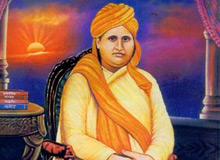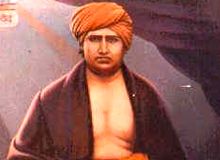The secretary of State for India,
Lord Salisbury , reduced the maximum age limit from 21 to 19 years for the Indian Civil Service Examination. Since the examination was held only in England, the Indians were virtually excluded from the highest civil service in their own country. The reduction of the upper age limit by Salisbury was viewed as a deliberate measure to eliminate whatever little chance the Indians still had to enter the service. The Indian Association resolved to organize a nationwide protest movement and to utilize the occasion as a means to inspire all the provinces of India with a sense of solidarity.

An impressive protest meeting held at Town Hall, Calcutta, on 24th March 1877, was followed by similar meetings in different parts of India. As a Special Delegate of the Indian Association, Surendranath Banerjee visited Lahore, Amritsar, Delhi, Meerut, Agra , Lucknow, Kanpur, Allahabad, Bombay, Ahmedabad, Poona, Madras, and other placesin 1877-78 to mobilize public opinion on the civil service question. The issue was thus admirably utilized by the leadersof the Indian Association , especially Surendranath Banerjea and Ananda Mohn bose, to build an all-India movement.Surendranath's travel and stirring speeches, generated great enthusiasm wherever he went. Indian association deputed in 1879 one of its most most talented members,
Lalmohan Ghosh, to Britain and lay before the British public the grievance
of the Indian people. The deputation met with little success but Lalmohan Ghosh presented the Indian case so admirably as to create a very favourable public impression in Britain and win the support of many leading British liberals like Gladstone, John Bright, and Chrles Duke.

The next important issue, which the Association took up in 1879, was the demand for self-Government. The demand for representative Government for India had been gathering momentum for quite some time, and the leaders of the Indian Association that local self-Government should be followed by National self-Government. Hence a committee was formed to prepare scheme of movement for obtaining a representative Government of India and issued a circular to all the branches to petition the Government, under the provision of Bengal Municipal Act of 1876, for reorganisation of the municipalities on an elective basis.The movement organised for elected local self Government by the Association in 1882 met a success and in 1884, new local Government rules came into force in Bengal, the Association urged the educated community in the districts to pariticipate in the elections and to press, wherever possible, for a non-official chairman.The Indian Association widened its breach with the British Indian Association by launching an active programme to support their cause. This populist measure provided the Indian Association in its battle for leadership with British Indian Association which had increasingly appeared a cotradiction with the landlords. In this case also the indian association got a success because the enacted a Tenancy Bill for the benifit of the peasants .
Indian Association took another lead in the Vernacular press act (1878) enforced by Lord Lyton Thus Indian Association won an enviable national fame under a group of dynamic leaders .
But the arrival of
Lord Ripon inIndia in 1880 with some measures 1. Repeal of the Vernacular Press Act and their introduction of the Local Self Government Act did much to assuage Indian Public Opinion.
In 1883 C.P.Ilbert, the Law Member of the Viceroy's Council introduced a bill to remove the race disqualification of Indian magistrates and empower them to sit in judgement over offending Europeans in the mofussil.The socalled Black Acts had also tried to imperial administration of justice.
Ilbert Bill, in the history of
India, a controversial measure proposed in 1883 that sought to allow senior Indian magistrates to preside over cases involving British subjects in India. The bill, severely weakened by compromise, was enacted by the Indian Legislative Council on Jan. 25, 1884. The bitter controversy surrounding the measure deepened antagonism between British and Indians.
British subjects in 1873 had been exempted from trial by Indian magistrates, and in cases involving death or transportation they could only be tried by a high court. But by 1883 the viceroy, Lord Ripon, proposed to make British subjects amenable to sessions courts, over which Indians were now senior enough in the
civil service to preside. This proposal as embodied in the Ilbert Bill provoked furious protests, especially among the Calcutta (Kolkata) European business community and the Bengal indigo planters, and there was covert sympathy from many officials. A compromise was reached by which a British subject could claim a jury, half of which would be Europeans. The new Westernized Indian
middle class felt itself slighted by this arrangement, and the incident did much to give Indian national feeling a political form.
The modified bill introduced by Ripon in January, 1884.The success of the opponent of the Ilbert Bill had taught the Indian leaders the efficacy of a highly organised agitation .






















 Dayanand Saraswati was a reformer and
Dayanand Saraswati was a reformer and  The 10 principles of Arya Samaj
The 10 principles of Arya Samaj



